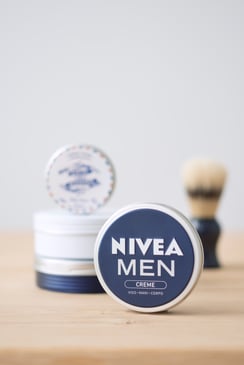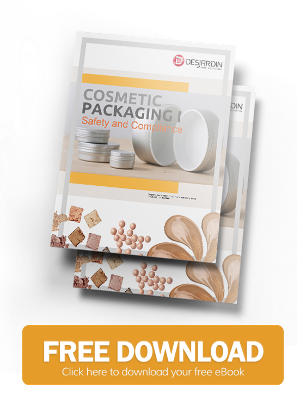The cosmetics industry, unlike the food or pharmaceutical industries, does not have to deal with stringent regulations by comparison. Cosmetic companies, however, still must follow rules under the Federal Food, Drug and Cosmetic Act and other consumer laws, but are not required to register or license products. In other words, they still must market safe products. Here are deeper details on regulations that shape cosmetic packaging.
FDA Attitude on Cosmetic Ingredients
FDA approval is not necessary to put a cosmetic product on the market. But manufacturers and marketers still have a responsibility to make sure they are unleashing safe products on the public. Disregard for safety can lead to major penalties. Even though the FDA does not require specific safety testing, it still oversees the cosmetics industry and sometimes makes recommendations for recalls, if products are found to be dangerous.
The government, for the most part, does not have specific requirements regarding ingredients of cosmetic products, other than respect to chemicals that affect colors. Other than most hair dyes, color additives must meet certain FDA requirements. The FDA may still inspect manufacturing facilities to make sure that proper controls and practices are in compliance with applicable laws.
The FDA might periodically purchase cosmetic products to analyze them for potential hazards or other issues. If problems arise associated with ingredients, the agency may issue consumer alerts through mass media press releases. The agency, however, does not have the available resources to monitor every cosmetic product on the market. Independent researchers, however, such as the Cosmetic Ingredient Review (CIR) panel, may notify the FDA on safety issues that affect consumer safety. Health care providers also play a role in working with the FDA to keep commercial cosmetic products safe.
FDA Action
For the most part, the FDA allows cosmetic manufacturers and marketers to voluntarily monitor safety of their products through its Voluntary Cosmetic Registration Program. In addition to requesting a product recall, here are key activities in which the FDA does get involved when a product fails to meet minimum standards:
- request for injunction through a federal court
- request for seizure of products by U.S. marshals
- initiation of criminal litigation
- deny cosmetic imports
Preserving Product Quality
 Cosmetic packaging must be designed to preserve the product quality. The FDA requires that packaging will protect the product against the following potential types of damage once it leaves the factory:
Cosmetic packaging must be designed to preserve the product quality. The FDA requires that packaging will protect the product against the following potential types of damage once it leaves the factory:
- mechanical
- thermal
- biological
- chemical
- by radiation (e.g., UV light)
- malicious human tampering
- electric
- compression
Environmental conditions must be taken into account each step of the distribution and marketing process from transport to storage to display. The product must be resistant to temperature, radiation and bacteria, as well as withstand damage from inadequate storage.
Label Transparency
It is of monumental importance that labels contain accurate information. So the key concept to remember is that information on labels must not be deceptive. The FDA does allow various chemicals to be summarized under the umbrella term "fragrance." The agency may conclude that a product is misbranded if the following violations occur:
- false or misleading labeling
- label omits name and address of the manufacturer, packer or distributor
- net quantity of contents is not listed
- the labeling fails to be conspicuous for consumers to read
- misleading container or fill
 The intended use of the product must also be specifically stated, along with the consequences that result from unintended usage. The legal definition of the term "intended" specifically corresponds with package labeling. Courts usually depend on consumer perceptions of label meanings and not so much on the company's interpretation. In other words, the intended use must be stated clearly.
The intended use of the product must also be specifically stated, along with the consequences that result from unintended usage. The legal definition of the term "intended" specifically corresponds with package labeling. Courts usually depend on consumer perceptions of label meanings and not so much on the company's interpretation. In other words, the intended use must be stated clearly.
The legal definition of a cosmetic crosses over into the drug category when the intended use is associated with cleansing, beautification, promotion of attractiveness, disease prevention or other issues that affect the structure or function of the human body. A cosmetic also is classified as a drug when intended use is associated with exerting physical or psychological effects.
The term "package" is defined as the outer container of a product, such as a box, jar, bottle or carton. It is also defined as the container of the product substance even if it is not displayed in the outer packaging. The term "label" carries the definition of "written, printed or graphic matter affixed to any consumer commodity or affixed to or appearing upon a package" for any consumer item. These definitions appear in the FD&C Act.
Conclusion
While the FDA does not order recalls for cosmetic products, it still conducts research and may request a marketer to pull a product. The FDA may impose penalties due to lack of compliance with basic laws under the FD&C Act, but its oversight is minimal compared with how it monitors food and drug items. Packaging is key to cosmetic products meeting basic requirements of the law and should not be taken for granted.
Disclaimer: The postings in this blog section do not necessarily represent Desjardin's positions, strategies or opinions.
References and Further Reading
- More posts on Cosmetic Packaging, by Alex Cosper and Dawn M. Turner
- Is It a Cosmetic, a Drug, or Both? (2016), by the U.S. Food and Drug Administration
- Regulation (EC) No ´1223/2009 on Cosmetic Products (2009), The European Parliament the the European Council
- ISO 22715:2006: Cosmetics -- Packaging and labelling (2006), International Organization for Standardization
Photo: "FDA Cleared", Courtesy of John Fischer, Flickr, (CC BY 2.0)







